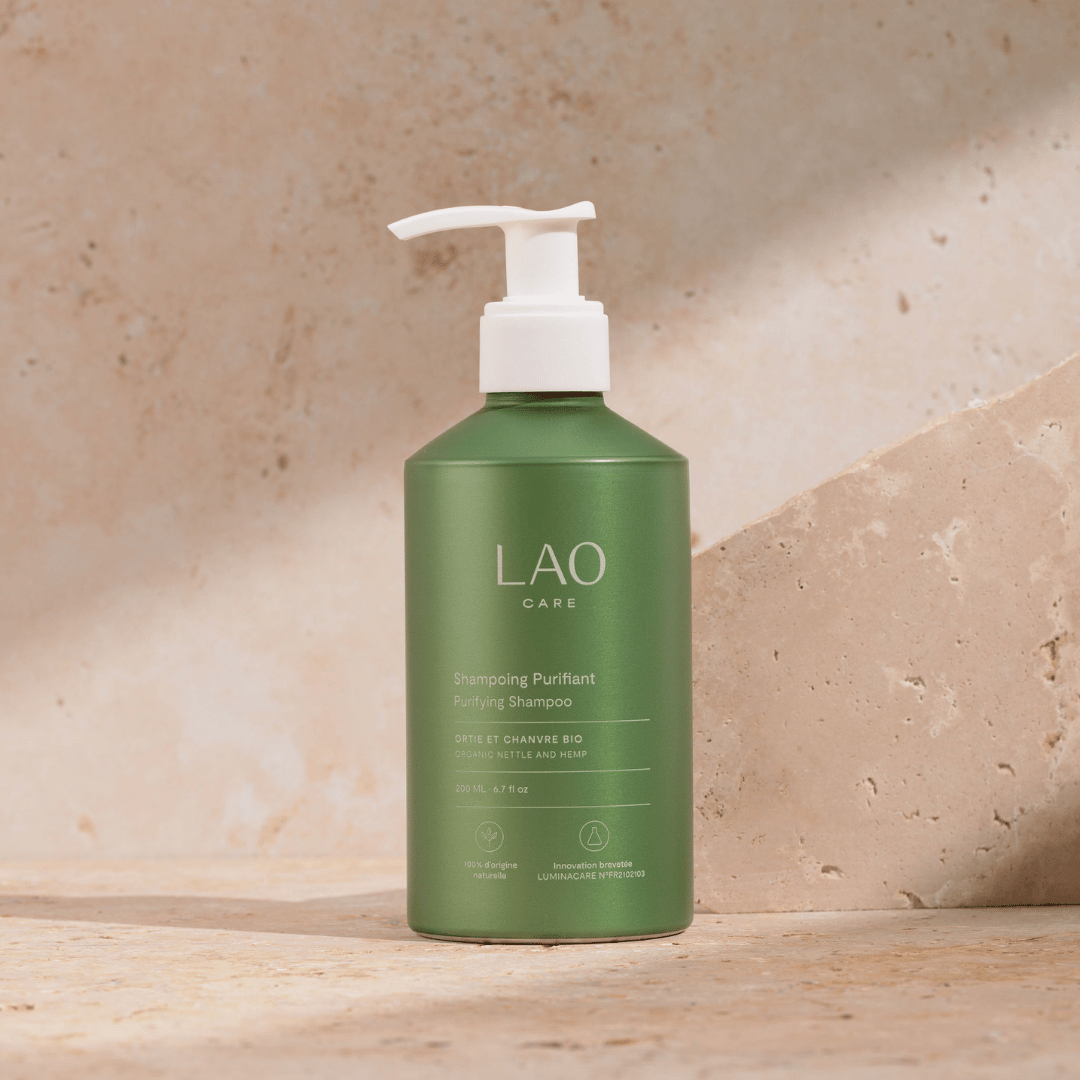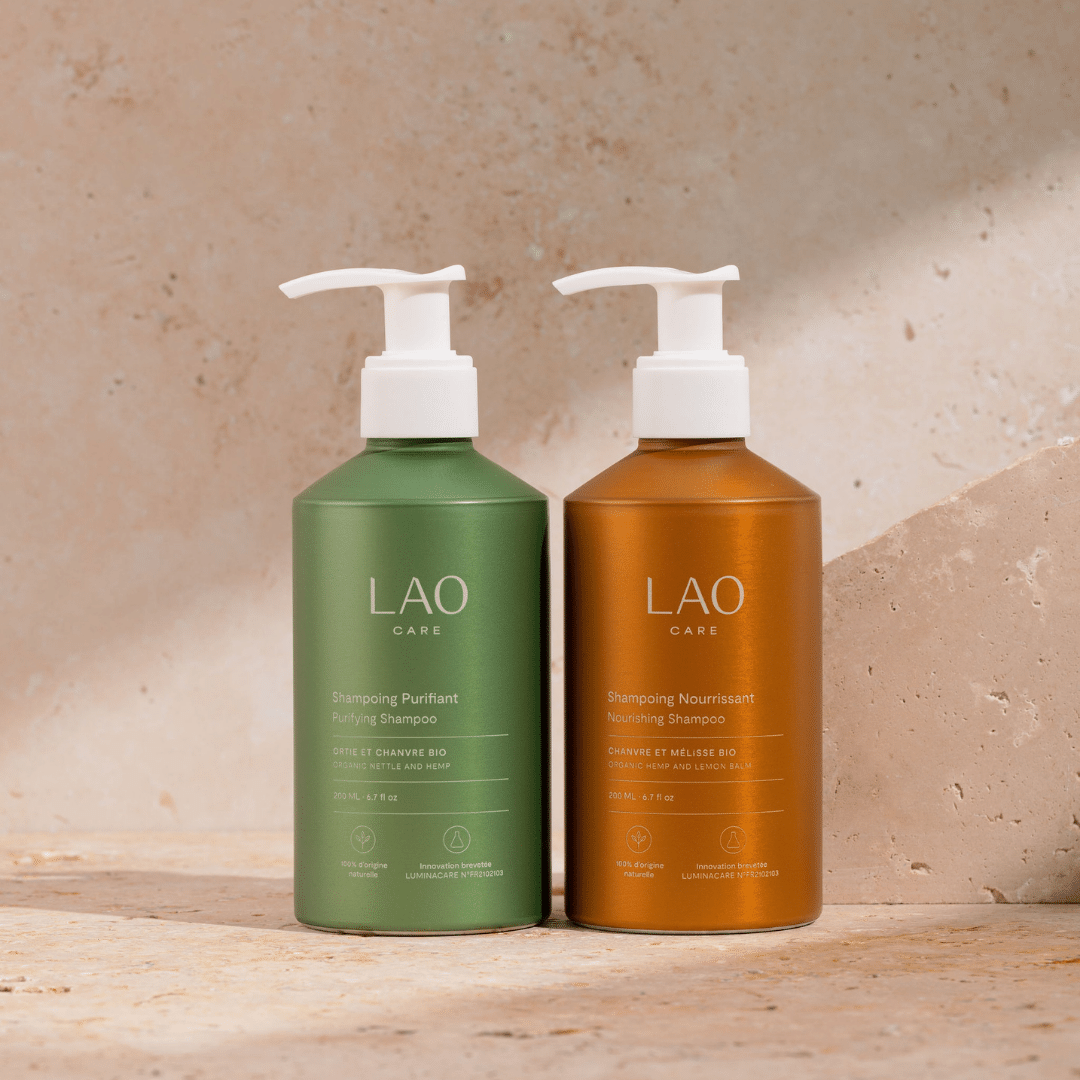Today we're discussing a common but little-known condition that affects about 5% of the world's population: seborrheic dermatitis . It's also sometimes called seborrheic dermatitis.
It's not just a matter of dandruff or itching, but a complex skin disease that deserves our attention because it really impacts our daily lives!
Whether you're looking for concrete answers for yourself or to maintain a healthy scalp , you've come to the right place to improve your hair comfort!
What is Seborrheic Dermatitis?
Seborrheic dermatitis is a skin condition that primarily affects the scalp, but can also affect other areas of the body. It is characterized by more stubborn dandruff than most people know, often accompanied by redness and itching . If you have ever experienced the sensation of a scalp that "burns" or itches unbearably, you may have experienced this famous dermatitis.
But then, where does it come from? ...This is a question that even experts are still looking for precise answers to. We know that it is an inflammatory reaction linked to excessive production of sebum , this natural oil that protects and moisturizes our skin and hair.
But that's not all: yeasts of the genus Malassezia, normally present on our skin, can also play a role in the appearance of this condition by feeding on this sebum.
And no, contrary to what some may think, seborrheic dermatitis is not due to poor hygiene. In fact, this inflammatory disease can affect anyone, regardless of age or skin type, although it is more common in younger men.
So, how do you recognize seborrheic dermatitis? If you notice areas of reddish skin, oily patches, white or yellowish dandruff, and these symptoms persist despite regular washing , you may well have dermatitis. Go see a dermatologist for a proper diagnosis and safe treatment!
Don't worry, although this problem may seem annoying and sometimes embarrassing, there are many treatments to manage it and relieve your scalp.

Aggravating Factors of Seborrheic Dermatitis
Now that you have a better understanding of the causes of seborrheic dermatitis, let's look at the factors that can make it worse. You may be wondering why some days are worse than others, or why this condition seems to flare up periodically.
Hormonal changes
Faced with life's hazards, such as stress and fatigue , our body reacts sensitively, impacting both our mood and the condition of our skin.
These periods, when hormones fluctuate, lead to increased sebum production, making dermatitis symptoms more prevalent. The same goes for key life moments like puberty, pregnancy, or menopause—natural and powerful stages marked by hormonal fluctuations that are reflected in the health of our scalp.
Weather conditions
You may have noticed that your scalp reacts differently depending on the season. Weather conditions, especially the cold and dry air of winter, can dry out your skin.
A shampoo that is too stripping
As in many things, balance is key, and this applies to hair care too!
The choice of shampoo plays a crucial role in the fight against seborrheic dermatitis , because it interacts directly with your scalp. The latter, living and reactive like the skin on your face, can become unbalanced if the shampoo is too aggressive. An attacked scalp tends to produce more sebum to compensate for the damage to its natural protective barrier, the hydrolipidic film.
It's important to know that many shampoos, whether synthetic or not, contain inferior cleansing agents that don't preserve the skin barrier. Among these agents, sulfates, well known today, are easily detected in the compositions thanks to their scientific names such as Sodium Lauryl - Laureth Sulfate (SLS).
Effective Solutions and Treatments
Fortunately, there are a variety of options to suit different needs and preferences to soothe symptoms related to dermatitis.
Medicated shampoos
To combat seborrheic dermatitis, your first ally is often medicated shampoos. Rich in carefully selected active ingredients, these shampoos are formulated to soothe and treat symptoms.
Here are some of the most commonly used components:
-
Ketoconazole: A powerful antifungal, ideal for reducing the overgrowth of yeasts such as Malassezia.
-
Coal Tar: Effective in slowing cell turnover and reducing itching and flaking.
-
Salicylic Acid: Helps remove scales and soothe inflammation.
It may be beneficial to alternate between a medicated shampoo and a mild shampoo on a daily basis, as this can effectively treat dermatitis while avoiding irritating the scalp from overuse of medicated products.
In addition to shampooing, it may be helpful to use complementary treatments, such as antifungal creams or lotions, especially if symptoms are severe.
Daily shampoos and washing
Wash your hair regularly, meaning every 2 to 3 days! This is essential to rid your scalp of dandruff and excess sebum.
You can alternate use with gentle shampoos, such as those from LAO Care. For oily scalps, the ideal choice is a gentle, sulfate-free shampoo , enriched with active ingredients known for their sebum-regulating properties.
LAO Purifying Shampoo embodies this perfection: a gentle formula, specially designed for oily hair.
🚿 Gentle cleansing of the scalp (89% proven effective ), without sulfates, thanks to the action of three sugar derivatives.
🌿 Intense purification of the scalp (95% effective) thanks to its rich concentration of nettle hydrosol.
✨ Visibly softer hair (74%* effectiveness) thanks to a non-oily, ultra-light conditioner.
Moreover, a significant reduction in dandruff was observed among testers (79%*).
Test and Adapt
Every scalp is unique , and what works for one person may not work for another!
It may be necessary to try several shampoos before finding the one that works best for you. Start by using your chosen product for a few weeks to assess its effectiveness and adjust if necessary.
Natural Treatments and Home Remedies
If you prefer a more natural approach or want to complement a medicinal approach, there are herbal home remedies that can provide relief:
-
Apple Cider Vinegar: Applied diluted to the scalp, it can help balance pH and reduce itching.
-
Black Seed Oil , rich in ceramides and antioxidants, moisturizes and soothes inflamed skin, strengthening its natural protection.

-
Aloe Vera: An excellent natural moisturizer that can help soothe inflammation and redness.
...in conclusion
As you can see, seborrheic dermatitis is a complex but manageable condition. You'll need to be patient and try several shampoos and treatments to find your ideal routine.
Let's recap the key points:
-
Understanding Seborrheic Dermatitis: An inflammatory condition of the scalp, characterized by dandruff, itching, and redness.
-
Identify Aggravating Factors: Stress, hormonal changes, weather conditions, dietary imbalances, and the use of unsuitable hair products can all exacerbate symptoms.
-
Opt for Effective Treatments: Medicated shampoos, natural remedies, and adjustments to your daily routine can help manage symptoms.
-
Choosing the Right Shampoo: Look for effective active ingredients while avoiding irritants, and don't hesitate to test different products to find the best one for you.
-
Learn from Others' Experiences: Testimonials show that with patience and the right care, it is possible to significantly improve the condition of your scalp.
Final Tips:
-
Be patient and persistent!
-
Do not hesitate to consult a dermatologist for professional advice.
-
Make your hair health a priority by adopting a suitable care routine and paying attention to your scalp's reactions.
For personalized and holistic advice, take the LAO Care hair diagnosis !
Frequently Asked Questions
How to get rid of seborrheic dermatitis on the scalp?
To get rid of seborrheic dermatitis of the scalp, it is recommended to use medicated shampoos containing ketoconazole, salicylic acid, or coal tar. It is important to wash your hair regularly to reduce sebum buildup and apply topical antifungal treatments if necessary. Avoid irritating products and adopt a gentle hair care routine.
What causes seborrheic dermatitis?
Seborrheic dermatitis is caused by several factors, including excessive sebum production and the presence of Malassezia yeast on the scalp. Other factors such as stress, hormonal changes, extreme weather conditions, and certain skin disorders can also contribute to its onset or worsening.
Can seborrheic dermatitis be cured?
Although seborrheic dermatitis is not entirely curable, its symptoms can be effectively managed and controlled. With the right treatment, such as regular use of medicated shampoos and good scalp care practices, symptoms like itching, redness, and dandruff can be greatly reduced.
How to get rid of seborrheic dermatitis naturally?
To treat seborrheic dermatitis naturally, consider using home remedies like apple cider vinegar or black seed oil, which can help rebalance your scalp's pH and soothe inflammation. Use a gentle natural shampoo like this one from LAO Car e to help balance your scalp.
Is seborrheic dermatitis contagious?
No, seborrheic dermatitis is not contagious. It is an inflammatory skin condition related to internal factors such as sebum production and the presence of yeast on the skin, not an infection that can be transmitted from person to person.
Can seborrheic dermatitis be cured permanently?
There is no permanent cure for seborrheic dermatitis, but symptoms can be effectively managed with the right treatment. The key lies in ongoing management, using medicated shampoos and adopting appropriate hair care habits to control flare-ups and maintain scalp health.
What is the role of diet in seborrheic dermatitis?
Diet plays an important role in managing seborrheic dermatitis. A balanced diet rich in natural anti-inflammatories and essential nutrients can help reduce inflammation and boost skin health. Foods rich in zinc, omega-3s, and antioxidants, for example, are often recommended to improve skin condition.







Leave a comment